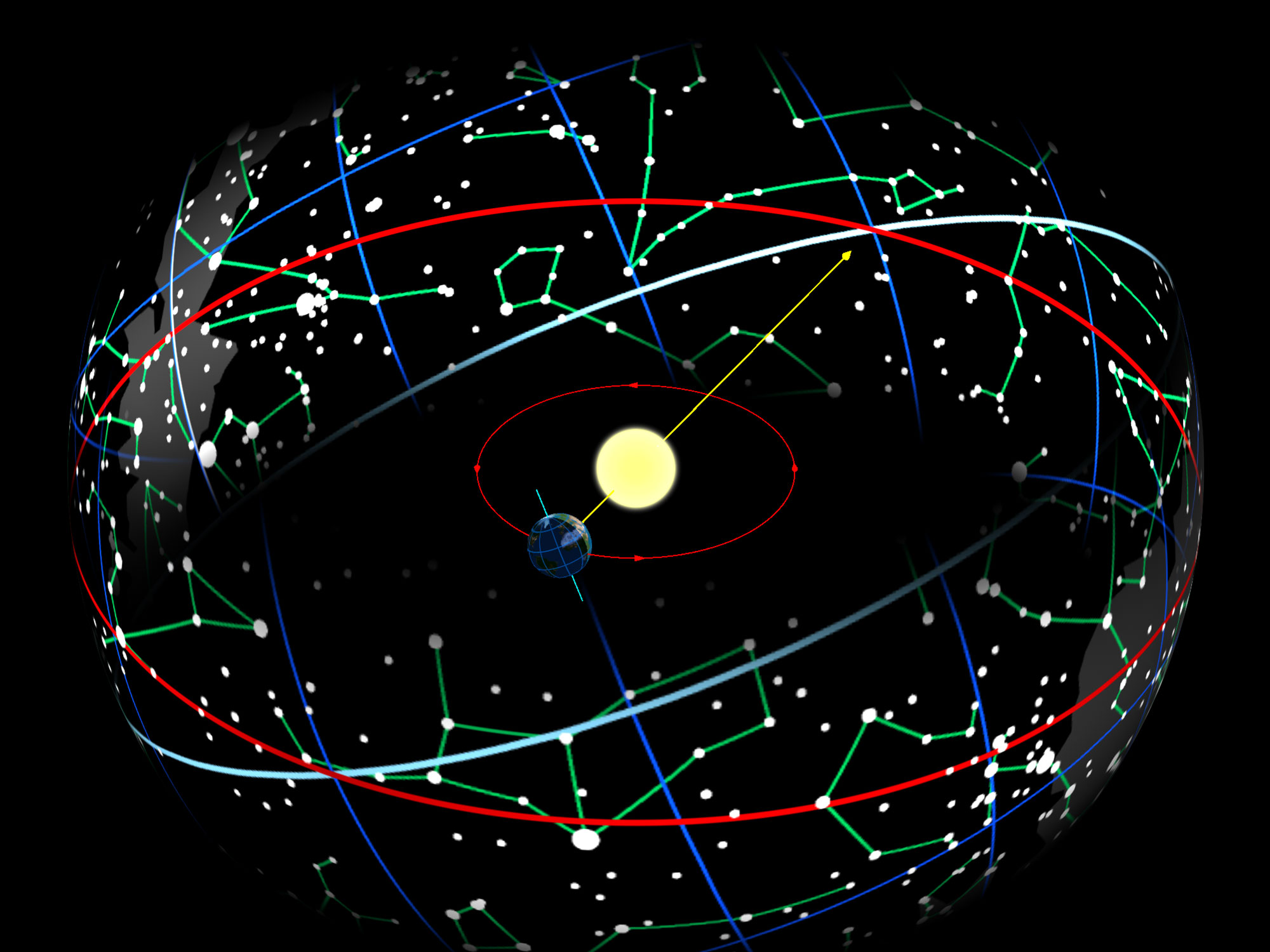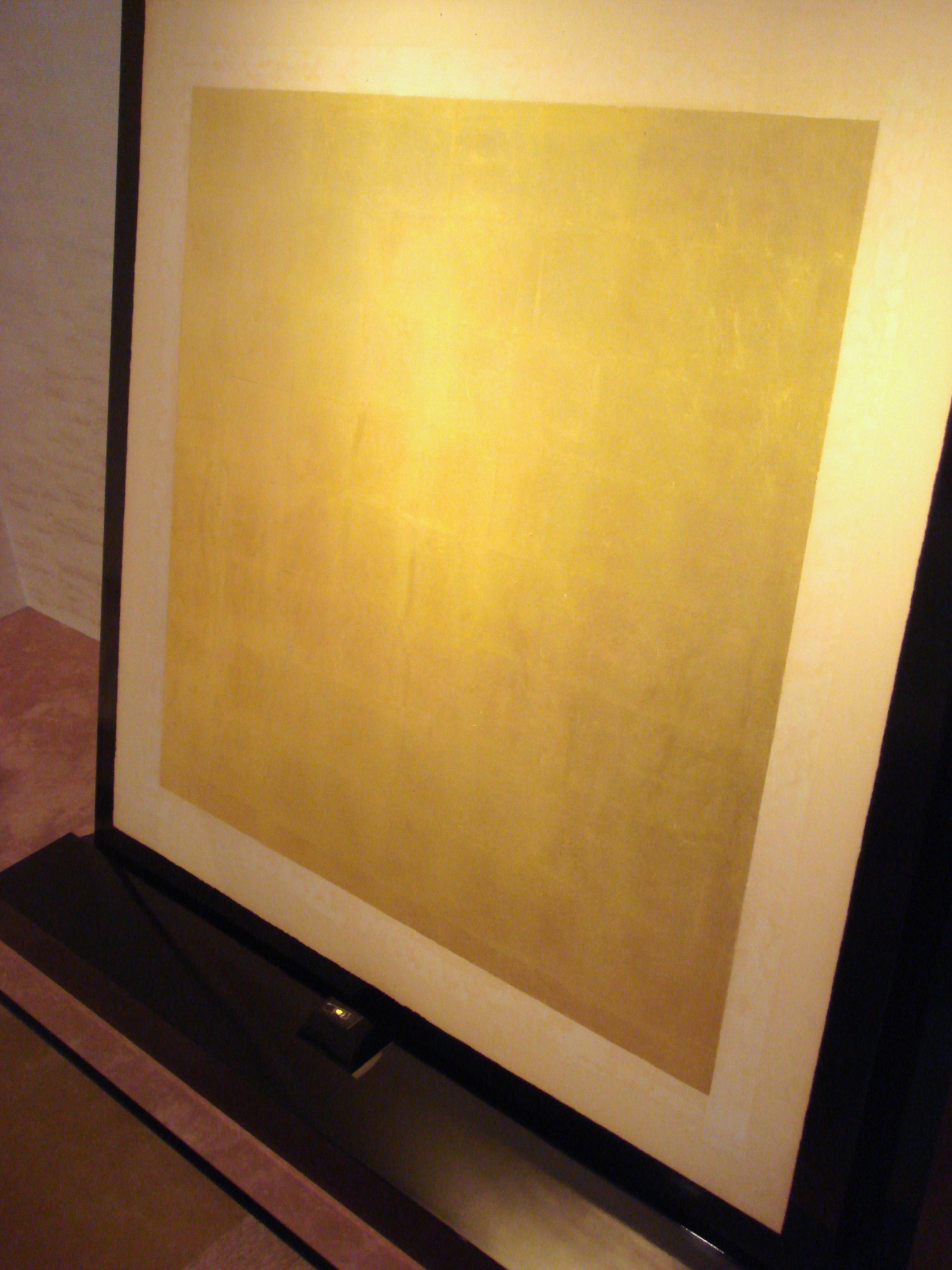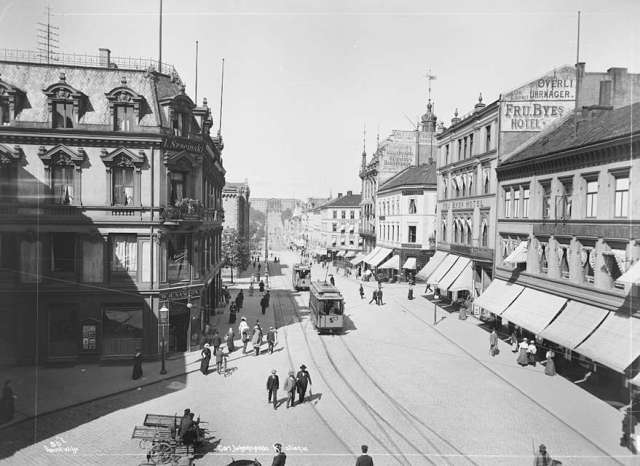|
Oslo Astrological Clock
The Oslo Astrological Clock is located at Karl Johans gate 3 in Oslo, the capital city of Norway. The astrological clock was donated by Christian Ringnes and features artwork designed by artists Elena Engelsen and Per Ung. Ringnes explained during his unveiling speech, "we aim to actively contribute in making Oslo a beautiful and pleasant city." Clock Structure The clock is in diameter; with the clock face at . Astrological signs are cast in bronze and are painted. The rings are made of copper and are also painted. The tiles in the dial are coated with 22- carat gold leaf and the total weight of the clock is approx. . Artwork It was designed by artists Elena Engelsen and Per Ung, who spent over a year collaborating on the project. Engelsen created the exotic animal characters star, while Ung designed the human characters in the zodiac. This was the couple’s second joint artwork venture. Unveiling The unveiling of the clock took place on October 20, 2010 at a ceremony ... [...More Info...] [...Related Items...] OR: [Wikipedia] [Google] [Baidu] |
Oslo Astronomical Clock01
Oslo ( , , or ; sma, Oslove) is the Capital city, capital and List of towns and cities in Norway, most populous city of Norway. It constitutes both a Counties of Norway, county and a Municipalities of Norway, municipality. The municipality of Oslo had a population of in 2022, while the city's greater urban area had a population of in 2019, and the metropolitan area had an estimated population of in 2021. During the Viking Age the area was part of Viken (region), Viken. Oslo was founded as a city at the end of the Viking Age in 1040 under the name Ánslo, and established as a kjobstad, ''kaupstad'' or trading place in 1048 by Harald Hardrada. The city was elevated to a diocese of Oslo, bishopric in 1070 and a capital under Haakon V of Norway around 1300. Personal unions with Denmark from Kalmar Union, 1397 to 1523 and again from Denmark–Norway, 1536 to 1814 reduced its influence. After being destroyed by a fire in 1624, during the reign of Christian IV of Denmark, King Ch ... [...More Info...] [...Related Items...] OR: [Wikipedia] [Google] [Baidu] |
Carat (purity)
The fineness of a precious metal object (coin, bar, jewelry, etc.) represents the weight of ''fine metal'' therein, in proportion to the total weight which includes alloying base metals and any impurities. Alloy metals are added to increase hardness and durability of coins and jewelry, alter colors, decrease the cost per weight, or avoid the cost of high-purity refinement. For example, copper is added to the precious metal silver to make a more durable alloy for use in coins, housewares and jewelry. Coin silver, which was used for making silver coins in the past, contains 90% silver and 10% copper, by mass. Sterling silver contains 92.5% silver and 7.5% of other metals, usually copper, by mass. Various ways of expressing fineness have been used and two remain in common use: ''millesimal fineness'' expressed in units of parts per 1,000 and ''karats'' or ''carats'' used only for gold. Karats measure the parts per 24, so that 18 karat = = 75% and 24 karat gold is considered 100% gol ... [...More Info...] [...Related Items...] OR: [Wikipedia] [Google] [Baidu] |
Astrologers
Astrology is a range of divinatory practices, recognized as pseudoscientific since the 18th century, that claim to discern information about human affairs and terrestrial events by studying the apparent positions of celestial objects. Different cultures have employed forms of astrology since at least the 2nd millennium BCE, these practices having originated in calendrical systems used to predict seasonal shifts and to interpret celestial cycles as signs of divine communications. Most, if not all, cultures have attached importance to what they observed in the sky, and some—such as the Hindus, Chinese, and the Maya—developed elaborate systems for predicting terrestrial events from celestial observations. Western astrology, one of the oldest astrological systems still in use, can trace its roots to 19th–17th century BCE Mesopotamia, from where it spread to Ancient Greece, Rome, the Islamic world, and eventually Central and Western Europe. Contemporary Western a ... [...More Info...] [...Related Items...] OR: [Wikipedia] [Google] [Baidu] |
Fabian Stang
Richard Fabian Stang (born 19 August 1955) is a Norwegian lawyer and a Norwegian politician for the Conservative Party."Former Oslo mayor fights off depression" ''Views and News from Norway'', Sep 29, 2016 He was Mayor of the city of from 2007 until 2015. Early life and education Stang was born in Oslo. He is the son of Norwegian actress and entrepreneur .Career Sta ...[...More Info...] [...Related Items...] OR: [Wikipedia] [Google] [Baidu] |
Mayor
In many countries, a mayor is the highest-ranking official in a municipal government such as that of a city or a town. Worldwide, there is a wide variance in local laws and customs regarding the powers and responsibilities of a mayor as well as the means by which a mayor is elected or otherwise mandated. Depending on the system chosen, a mayor may be the chief executive officer of the municipal government, may simply chair a multi-member governing body with little or no independent power, or may play a solely ceremonial role. A mayor's duties and responsibilities may be to appoint and oversee municipal managers and employees, provide basic governmental services to constituents, and execute the laws and ordinances passed by a municipal governing body (or mandated by a state, territorial or national governing body). Options for selection of a mayor include direct election by the public, or selection by an elected governing council or board. The term ''mayor'' shares a linguistic o ... [...More Info...] [...Related Items...] OR: [Wikipedia] [Google] [Baidu] |
Fabian Stang Og Christian Ringnes
Fabian may refer to: People * Fabian (name), including a list of people with the given name or surname * Pope Fabian (died 250), Catholic saint * Fabian Forte (born 1943), 1950s American teen idol, singer and actor, known by the mononym Fabian * Fabian (footballer), Brazilian footballer Fabian Maria Lago Vilela de Abreu (born 1997) * Fabulous Fabian (born 1970), former ring name of professional wrestler Marcus Alexander Bagwell Arts and entertainment *' or ''Fabian, the Story of a Moralist'', a novel by German author Erich Kästner * ''Fabian'' (film), a 1980 adaptation of Kästner's novel * '' Fabian – Going to the Dogs'', a 2021 film adaptation of Kästner's novel Characters * Fabian Cortez, a Marvel Comics villain, enemy of the X-Men * Fabian Prewett in the Harry Potter universe, maternal uncle to Ron Weasley * Fabian Rutter, from the Nickelodeon television show ''House of Anubis'' * Robert Fabian, protagonist of '' Fabian of the Yard'', a British 1950s television se ... [...More Info...] [...Related Items...] OR: [Wikipedia] [Google] [Baidu] |
Zodiac
The zodiac is a belt-shaped region of the sky that extends approximately 8° north or south (as measured in celestial latitude) of the ecliptic, the apparent path of the Sun across the celestial sphere over the course of the year. The paths of the Moon and visible planets are within the belt of the zodiac. In Western astrology, and formerly astronomy, the zodiac is divided into twelve signs, each occupying 30° of celestial longitude and roughly corresponding to the following star constellations: Aries, Taurus, Gemini, Cancer, Leo, Virgo, Libra, Scorpio, Sagittarius, Capricorn, Aquarius, and Pisces. These astrological signs form a celestial coordinate system, or more specifically an ecliptic coordinate system, which takes the ecliptic as the origin of latitude and the Sun's position at vernal equinox as the origin of longitude. Name The English word ' derives from , the Latinized form of the Ancient Greek ( ), meaning "cycle or circle of little anim ... [...More Info...] [...Related Items...] OR: [Wikipedia] [Google] [Baidu] |
Gold Leaf
Gold leaf is gold that has been hammered into thin sheets (usually around 0.1 µm thick) by goldbeating and is often used for gilding. Gold leaf is available in a wide variety of karats and shades. The most commonly used gold is 22-karat yellow gold. Gold leaf is a type of metal leaf, but the term is rarely used when referring to gold leaf. The term ''metal leaf'' is normally used for thin sheets of metal of any color that do not contain any real gold. Pure gold is 24 karat. Real, yellow gold leaf is approximately 91.7% pure (i.e. 22-karat) gold. Silver-colored white gold is about 50% pure gold. Layering gold leaf over a surface is called gold leafing or gilding. Traditional water gilding is the most difficult and highly regarded form of gold leafing. It has remained virtually unchanged for hundreds of years and is still done by hand. In art Gold leaf is sometimes used in art in a "raw" state, without a gilding process. In cultures including the European Bronze Age i ... [...More Info...] [...Related Items...] OR: [Wikipedia] [Google] [Baidu] |
Copper
Copper is a chemical element with the symbol Cu (from la, cuprum) and atomic number 29. It is a soft, malleable, and ductile metal with very high thermal and electrical conductivity. A freshly exposed surface of pure copper has a pinkish-orange color. Copper is used as a conductor of heat and electricity, as a building material, and as a constituent of various metal alloys, such as sterling silver used in jewelry, cupronickel used to make marine hardware and coins, and constantan used in strain gauges and thermocouples for temperature measurement. Copper is one of the few metals that can occur in nature in a directly usable metallic form (native metals). This led to very early human use in several regions, from circa 8000 BC. Thousands of years later, it was the first metal to be smelted from sulfide ores, circa 5000 BC; the first metal to be cast into a shape in a mold, c. 4000 BC; and the first metal to be purposely alloyed with another metal, tin, to create br ... [...More Info...] [...Related Items...] OR: [Wikipedia] [Google] [Baidu] |
Karl Johans Gate
Karl Johans gate is the main street of the city of Oslo, Norway. The street was named in honor of King Charles III John, who was also King of Sweden as Charles XIV John. Karl Johans gate is a composite of several older streets that used to be separate thoroughfares. The eastern section was part of Christian IV's original city near the ramparts surrounding the city. When the ramparts were removed to make way for Oslo Cathedral, three separate sections eventually became ''Østre Gade''. The wider western section was built during the 1840s as an avenue connecting the newly erected Norwegian Royal Palace with the rest of the city. In 1852, it was named Karl Johans gate in honor of the recently deceased king. His equestrian statue, by sculptor Brynjulf Bergslien, was later erected during 1875 in front of the Royal Palace. When the Norwegian parliament building was completed in 1866 at the junction of the two formerly separate streets, the two streets were joined and the whole le ... [...More Info...] [...Related Items...] OR: [Wikipedia] [Google] [Baidu] |
Bronze
Bronze is an alloy consisting primarily of copper, commonly with about 12–12.5% tin and often with the addition of other metals (including aluminium, manganese, nickel, or zinc) and sometimes non-metals, such as phosphorus, or metalloids such as arsenic or silicon. These additions produce a range of alloys that may be harder than copper alone, or have other useful properties, such as strength, ductility, or machinability. The archaeological period in which bronze was the hardest metal in widespread use is known as the Bronze Age. The beginning of the Bronze Age in western Eurasia and India is conventionally dated to the mid-4th millennium BCE (~3500 BCE), and to the early 2nd millennium BCE in China; elsewhere it gradually spread across regions. The Bronze Age was followed by the Iron Age starting from about 1300 BCE and reaching most of Eurasia by about 500 BCE, although bronze continued to be much more widely used than it is in modern times. Because histori ... [...More Info...] [...Related Items...] OR: [Wikipedia] [Google] [Baidu] |








